Hyundai i20 [2020-2023] Asta (O) 1.5 MT Diesel
|Rate & Win
- i20 [2020-2023]
- Specs & Features
- Variants
- Colours
- User Reviews
discontinued
Variant
Asta (O) 1.5 MT Diesel
City
Show price in my city
Rs. 10.84 Lakh
Last Recorded PriceHyundai i20 [2020-2023] Asta (O) 1.5 MT Diesel Review
Apart from the new 1.0-litre Turbo Petrol, we also drove the 1.5-litre diesel guise of the new Hyundai i20.
Engines and Performance
Ride and handling
Interior Space and Quality
Features and Equipment
Conclusion
Specifications & Features
- Specifications
- Features
- Specifications
- Features
Specifications
Engine & Transmission
Engine1493 cc, 4 Cylinders Inline, 4 Valves/Cylinder, DOHCEngine Type1.5 l U2Fuel TypeDieselMax Power (bhp@rpm)99 bhp @ 4000 rpmMax Torque (Nm@rpm)240 Nm @ 1500 rpmMileage (ARAI)25.2 kmplDriving Range932 kmDrivetrainFWDTransmissionManual - 6 GearsEmission StandardBS 6Valve/Cylinder (Configuration)4, DOHCDimensions & Weight
Length3995 mmWidth1775 mmHeight1505 mmWheelbase2580 mmGround Clearance170 mmCapacity
Suspensions, Brakes, Steering & Tyres
Features
Exterior
Braking & Traction
Safety
Comfort & Convenience
Lighting
Locks & Security
Doors, Windows, Mirrors & Wipers
Entertainment, Information & Communication
Mobile App Features
Storage
Airbags
Seats & Upholstery
Instrumentation
Manufacturer Warranty
Other i20 [2020-2023] Variants
| Variants | Price | Specifications | |
|---|---|---|---|
Rs. 10.84 Lakh | 5 Person, FWD, 240 Nm, 170 mm, 311 litres, 6 Gears, 1.5 l U2, Electrically Adjustable, 37 litres, 932 km, No, No, Front & Rear, 21 kmpl, 3 Star (Global NCAP), 3995 mm, 1775 mm, 1505 mm, 2580 mm, 240 Nm @ 1500 rpm, 99 bhp @ 4000 rpm, Keyless, Yes (Automatic Climate Control), Front & Rear, 1, Reverse Camera with Guidance, Yes, Yes, 0, Yes, Yes, No, 6 Airbags (Driver, Passenger, 2 Curtain, Driver Side, Front Passenger Side), Yes, 1, BS 6, 5 Doors, 25.2 kmpl, 25.2 kmpl, Diesel, Manual, 99 bhp | Get Offers from Dealers |
Similar Cars
Explore Used Hyundai Elite i20
Colors
Starry Night
Titan Grey
Typhoon Silver
Fiery Red
Polar White
View More Colours
Write a detailed review and you can win Amazon voucher worth Rs. 2,000
Reviews
- (48 Ratings) 28 Reviews
4.0/5
- Value for moneyComparatively, the i20 is smooth for driving and comfortable looks attractive, good performance. It looks middle class and sporty and the hatchback king an enjoyable sound system When driving the car never get the noise sound.Rating parameters(out of 5)5
Exterior
5Comfort
5Performance
5Fuel Economy
5Value For Money
About the ReviewerPurchase UsedDriven forIts my mate since agesWas this review helpful?00 - Super carVery good car, a sporty, luxurious, eye-catching model, a small car with a sunroof, very good torque, very nice driving experience, only the problem is ground is clear, should be 190 mm and moreRating parameters(out of 5)5
Exterior
5Comfort
5Performance
5Fuel Economy
5Value For Money
About the ReviewerPurchase NewDriven forFew thousand kilometersWas this review helpful?32 - Hyundai i20After driving 5000 kms I met with an personal major accident on Highway with my Hyundai i20.With 3 people on board and about speed of 85 km/hr on cruise control my car crashed straight on to a truck. After crash the car was majorly damaged with all engine parts,doors,sunroof,lights shattered on road. Inspite of such a horrible crash glad to review today that none of us in car got a single scratch on body.All the six airbags of car opened upon crash saving our lives.The doors got automatically unlocked upon crash putting hazard lights and horn on buzz.The SOS system of bluelink automatically called nearby hospital and ambulance came to save us.The Air conditioner automatically turned on to clear the airbag gas of car upon crash.Safety systems are just mind blowing of Hyundai i20 seriously in love with Hyunda.Saying about mileage,meter goes right upto 29 kmpl on Highway with 2 people on board and cruise speed of 65-70 km/hr for diesel 1.5 MT.Performance is just through the air.The torque just gushes out whenever you press that hot pedal getting you required acceleration.Comfort is at peak level.The noise cancellation of outside road is best than any other car on this segment.Just go for it blindly especially if safety is the concern.I have reviewed this on personal crash experience.Rating parameters(out of 5)5
Exterior
4Comfort
5Performance
5Fuel Economy
5Value For Money
About the ReviewerPurchase NewDriven forFew thousand kilometersWas this review helpful?173
- Home
- Hyundai Cars
- i20 [2020-2023]
- Asta (O) 1.5 MT Diesel

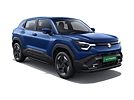


![Hyundai i20 [2020-2023] Asta (O) 1.5 MT Diesel Hyundai i20 [2020-2023] Asta (O) 1.5 MT Diesel](https://imgd.aeplcdn.com/664x374/n/cw/ec/40530/i20-exterior-right-front-three-quarter-5.jpeg?q=80)
![Hyundai i20 [2020-2023] Right Front Three Quarter Hyundai i20 [2020-2023] Right Front Three Quarter](https://imgd.aeplcdn.com/664x374/n/cw/ec/40530/i20-exterior-right-front-three-quarter-7.jpeg?q=80)
![Hyundai i20 [2020-2023] Right Side View Hyundai i20 [2020-2023] Right Side View](https://imgd.aeplcdn.com/664x374/n/cw/ec/40530/i20-exterior-right-side-view.jpeg?q=80)
![Hyundai i20 [2020-2023] Right Rear Three Quarter Hyundai i20 [2020-2023] Right Rear Three Quarter](https://imgd.aeplcdn.com/664x374/n/cw/ec/40530/i20-exterior-right-rear-three-quarter.jpeg?q=80)

![Hyundai i20 [2020-2023] Rear View Hyundai i20 [2020-2023] Rear View](https://imgd.aeplcdn.com/664x374/n/cw/ec/40530/i20-exterior-rear-view.jpeg?q=80)
![Hyundai i20 [2020-2023] Left Rear Three Quarter Hyundai i20 [2020-2023] Left Rear Three Quarter](https://imgd.aeplcdn.com/664x374/n/cw/ec/40530/i20-exterior-left-rear-three-quarter-5.jpeg?q=80)
![Hyundai i20 [2020-2023] Left Rear Three Quarter Hyundai i20 [2020-2023] Left Rear Three Quarter](https://imgd.aeplcdn.com/664x374/n/cw/ec/40530/i20-exterior-left-rear-three-quarter-7.jpeg?q=80)

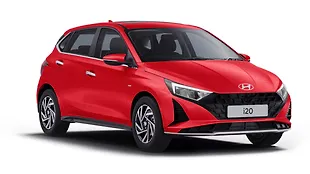

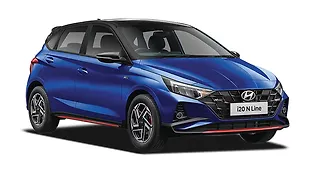
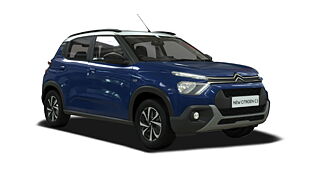


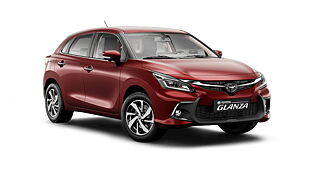
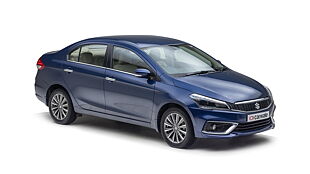
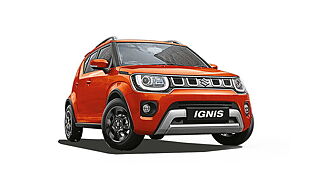
![Second hand Hyundai i20 Asta (O) 1.2 IVT [2022-2023] Second hand Hyundai i20 Asta (O) 1.2 IVT [2022-2023]](https://imgd.aeplcdn.com/310x174/vimages/202412/3762642_6427_1_1735387597615.jpg?q=80)
![Second hand Hyundai i20 Sportz 1.2 IVT [2020-2023] Second hand Hyundai i20 Sportz 1.2 IVT [2020-2023]](https://imgd.aeplcdn.com/310x174/vimages/202501/3797570_35000_1_1737182461063.jpg?q=80)
![Second hand Hyundai i20 Sportz 1.2 MT [2020-2023] Second hand Hyundai i20 Sportz 1.2 MT [2020-2023]](https://imgd.aeplcdn.com/310x174/vimages/202412/3729985_150599_1_1734691755272.jpg?q=80)
![Second hand Hyundai i20 Asta (O) 1.2 IVT [2022-2023] Second hand Hyundai i20 Asta (O) 1.2 IVT [2022-2023]](https://imgd.aeplcdn.com/310x174/vimages/202501/3788554_5218_1_1736838106326.jpg?q=80)
![Second hand Hyundai i20 Asta (O) 1.0 Turbo DCT [2020-2023] Second hand Hyundai i20 Asta (O) 1.0 Turbo DCT [2020-2023]](https://imgd.aeplcdn.com/310x174/vimages/202412/3768299_147059_1_1735478185355.jpg?q=80)
![Second hand Hyundai i20 Magna 1.2 MT [2020-2023] Second hand Hyundai i20 Magna 1.2 MT [2020-2023]](https://imgd.aeplcdn.com/310x174/vimages/202501/3747105_113321_1_1737017085402.jpg?q=80)

![Second hand Hyundai i20 Sportz 1.2 MT [2020-2023] Second hand Hyundai i20 Sportz 1.2 MT [2020-2023]](https://imgd.aeplcdn.com/310x174/vimages/202412/3757591_113321_1_1734776626341.jpg?q=80)
![Second hand Hyundai i20 Magna 1.2 MT [2020-2023] Second hand Hyundai i20 Magna 1.2 MT [2020-2023]](https://imgd.aeplcdn.com/310x174/vimages/202412/3718745_148599_1_1733196695321.jpg?q=80)